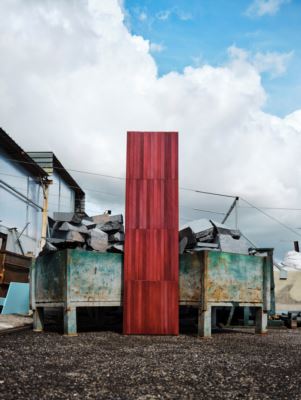You sit in front of the fireplace and watch the flames. Nothing special is going to happen—you know that. The fire will keep flickering, the wood crackling, and that’s all. And yet, you’re drawn to it. You can’t look away. Maybe it’s something primal. Our ancestors would gather around the fire after a day full of dangers, finding comfort in the simple fact of still being alive, in that raw manifestation of energy: a symbol of all that lives.
The volcano—a mountain with fire inside—holds that same power. It attracts without any obvious reason. It’s both physical threat and aesthetic promise: it might destroy, or dazzle, or both. That’s surely one reason why so many creatives orbit around Ranieri. Designers, artists, musicians, photographers, writers. All gathered around the fire in the night.
Lava shares the same nature as creativity. It emerges from dark depths, impossible to predict when or why. At first, it’s formless—but it can take on any imaginable shape. To tame and mold it takes skill and study. In this sense, Ranieri doesn’t just craft lava artifacts—it is lava. Rather than control creativity, it lets it erupt and cool into endless formations.
The word factory refers both to the artistic workshop and the industrial space. And indeed, Ranieri embraces both meanings of the term. Yes, it manufactures tables and tiles—but more broadly, it manufactures beauty.
Beauty, by its nature, is fragile, threatened, destined to perish. Immortals don’t write poetry. Beauty is life’s protest against the dominance of death. Every artist understands what it means to live beneath a volcano—a generator of both terror and wonder. That’s why every artist is, potentially, a member of the Ranieri Factory.Whatever emerges next from the Lava Factory is unpredictable. It depends on the genius of the lava.



